
Feral Atlas: The More-Than-Human Anthropocene, published online in 2021 by anthropologists Anna L. Tsing, Jennifer Deger and Alder Keleman Saxena, and architect and artist Feifei Zhou, is a digital project that sets out to map the more-than-human histories transforming life on earth. An experimental and collaborative project by nature, Feral Atlas rejects a hierarchical approach that emphasises particular genres, disciplinary-bound views and methods, and instead diversifies and revitalises natural history as an urgently needed mode of observation and description for our times.
Gathering together scientific reports, stories, videos, sound recordings, maps, illustrations and diagrams from natural and social scientists, humanists and artists, Feral Atlas draws attention to the nondesigned ecological effects created by imperial and industrial infrastructures that develop and spread beyond human control; which, Feral Atlas argues, create the Anthropocene.


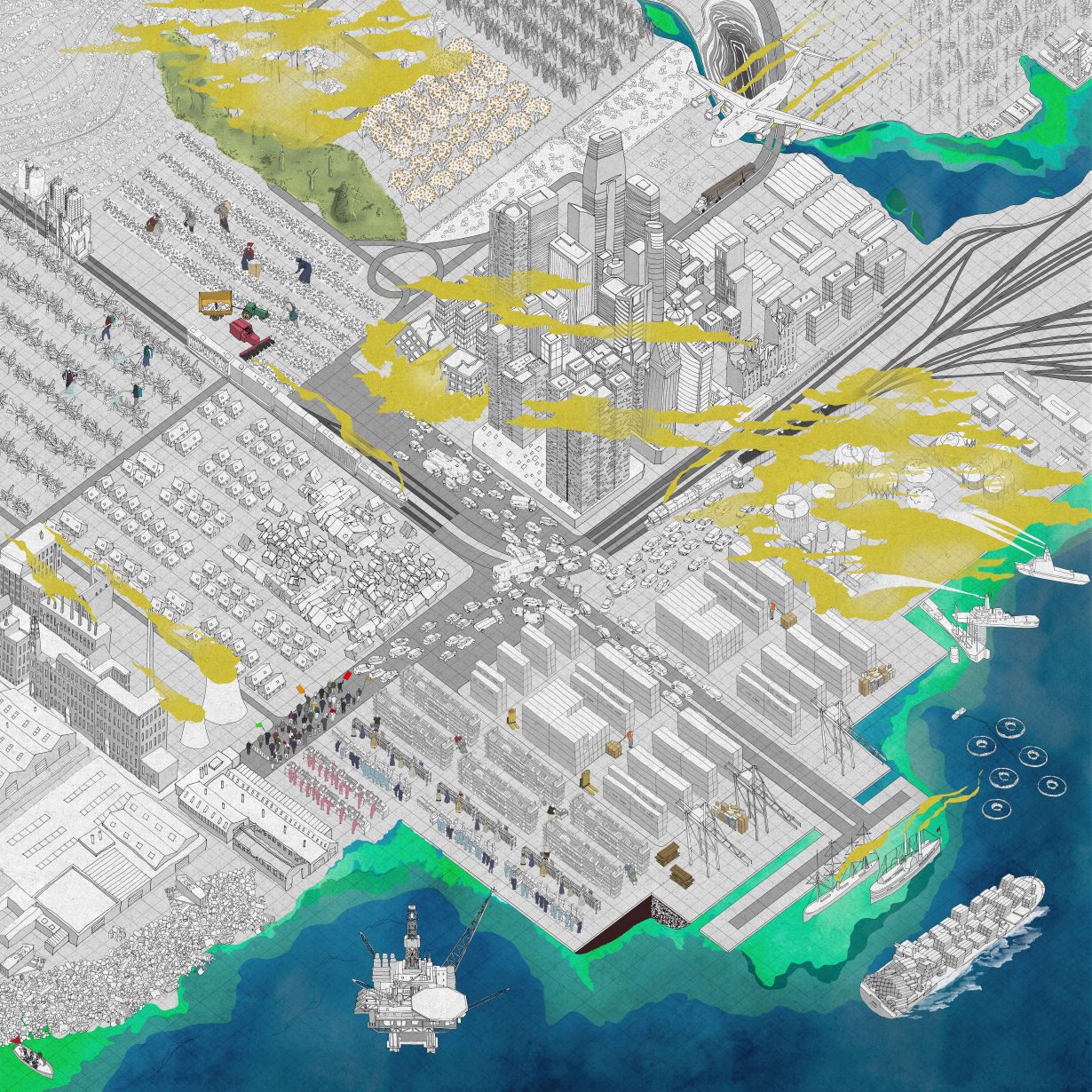
The infrastructures Feral Atlas focuses on are apparatuses that materially transform land, water and atmosphere through human design. However, instead of studying what the infrastructures are supposed to do, Feral Atlas pays attention to the nondesigned effects produced by unexpected entanglements between nonhuman entities and infrastructure projects. For example, the prevalence of industrial monoculture, in the hope of yielding agricultural crops with highest efficiency and productivity, creates a perfect condition for the spread of pests and pathogens; the use of pesticides and herbicides in attempts to control agricultural disease outbreaks result in the chemical pollution of soil, water and air, threatening ecologies and the ongoing existence of many species. These infrastructural effects, though unintentionally created, can be not only devastating, but irreversible.
Paying attention to nonhumans is central to Feral Atlas’s analysis. The pests and pathogens mentioned above are what the Feral Atlas cocurators refer to as ‘feral entities’, which are both living and nonliving beings that proliferate through infrastructure programmes. Salmon pests propagate at an uncontainable rate as a direct result of contaminated discharges from commercial salmon farms, which pollute the coastal waters of British Columbia and threaten wild fish populations; brownfield toxins from previous industrial activities leak, spread and remain in soil and water sources, contaminating the living environment for generations to come in hidden ways. Understanding how nonhumans respond to human infrastructure in autonomous ways that resist human control offers critical insight into how we can better comprehend, analyse and respond to the Anthropocene.
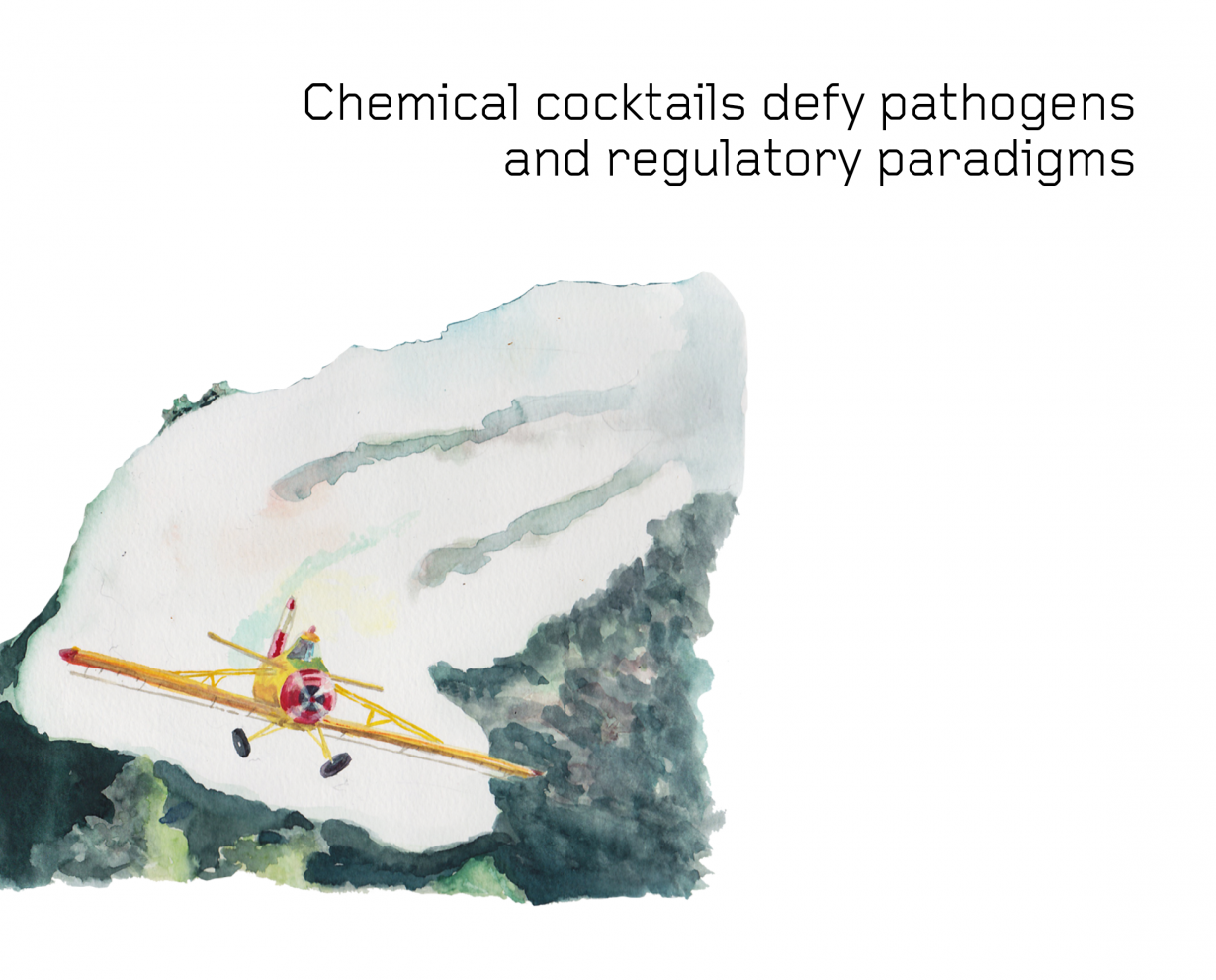



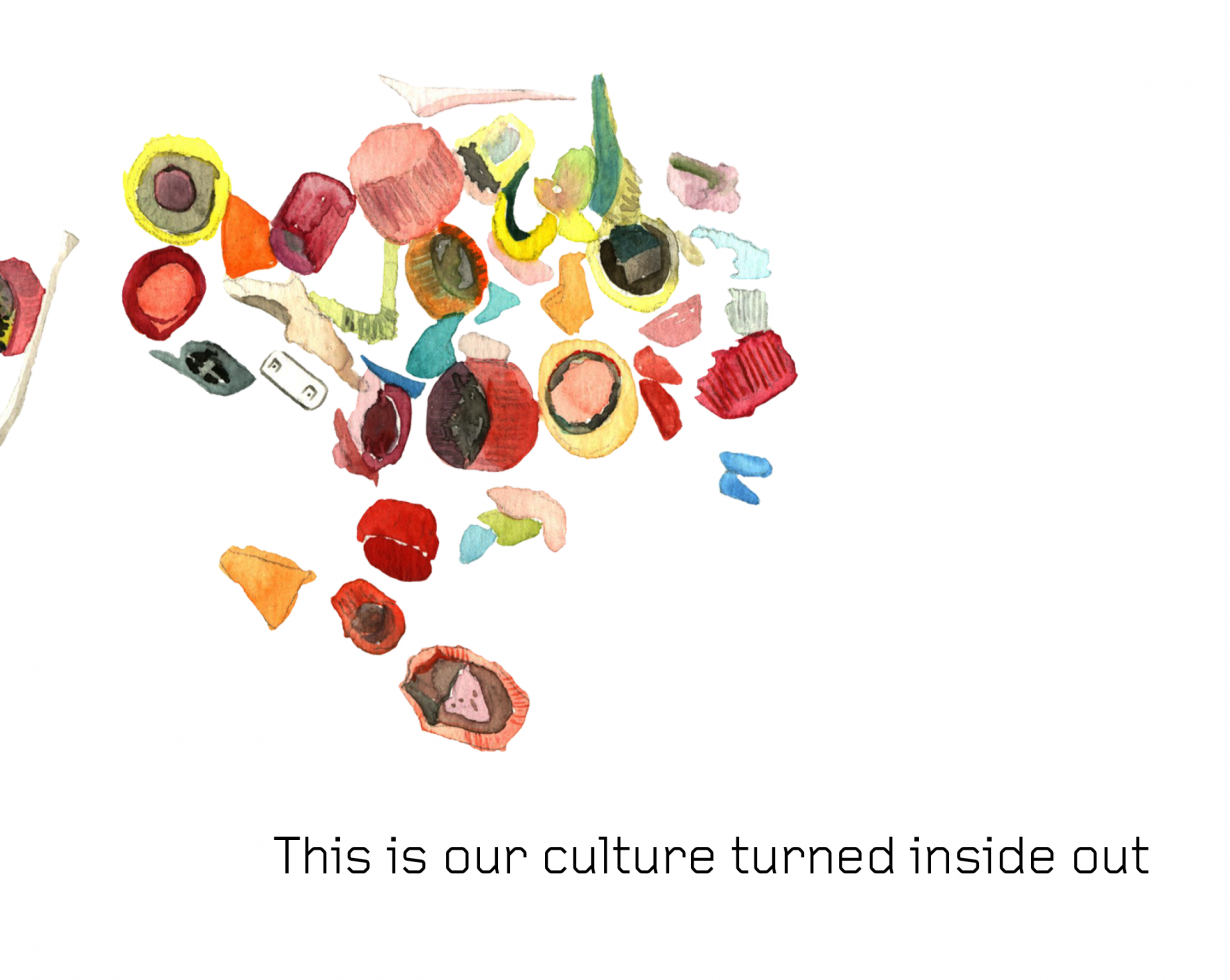
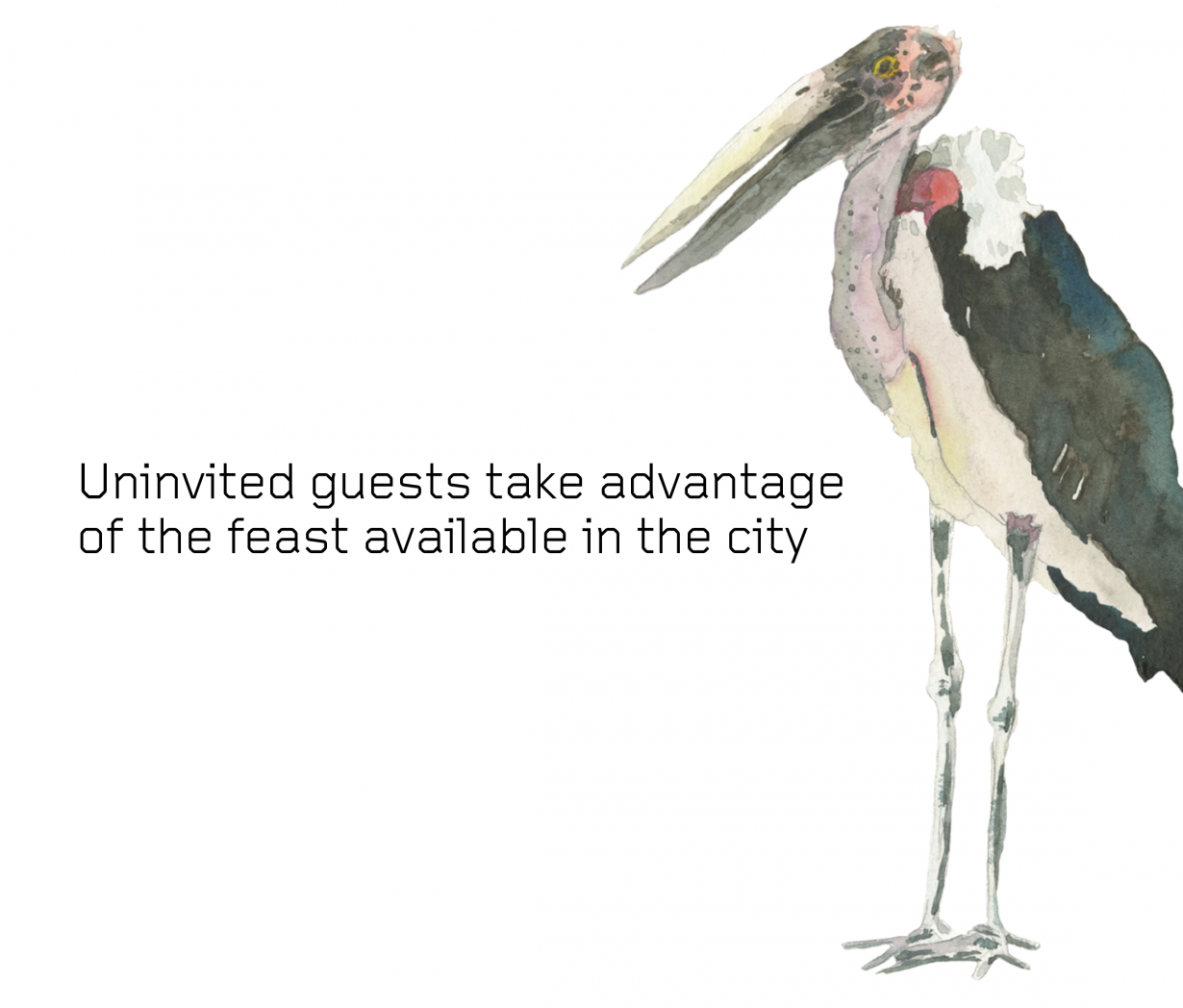
The digital platform is primarily organised around 79 field reports on 64 feral entities. The vectors that structure the user experience enable one to discover the interconnected nature of the feral forces at play. Each feral entity, pictured as a watercolour painting by Feifei Zhou and Maria Saeki, is embedded within one (and sometimes two) of the Anthropocene Detonator Landscapes by Feifei Zhou and her collaborators – drawings that juxtapose the infrastructure programmes that have initiated and continue to create feral ecologies.
The four Anthropocene Detonator Landscapes are titled Invasion, Empire, Capital and Acceleration. The making of Detonator Landscapes was also a collaborative process – elements of various artworks from several Indigenous and diasporic artists have been incorporated into the Detonator Landscapes through collaging, which enrich the visual narratives unfolding as a whole; a weaving together of perspectives that addresses the ecological impacts and violence of power dynamics that have shaped the world today. The contributors include Aboriginal Australian artist Nancy McDinny (Story of Mayawagu, in Invasion), First Nation Canadian artist Andy Everson (Heritage, in Invasion), Ghanaian British artist and architect Larry Botchway (Contract, in Empire) and Filipino artists Amy Lien and Enzo Camacho (WAKA WAKA GUDETAMANANGGAL and BRUTTO NETTO MANANANGGAL, in Acceleration).
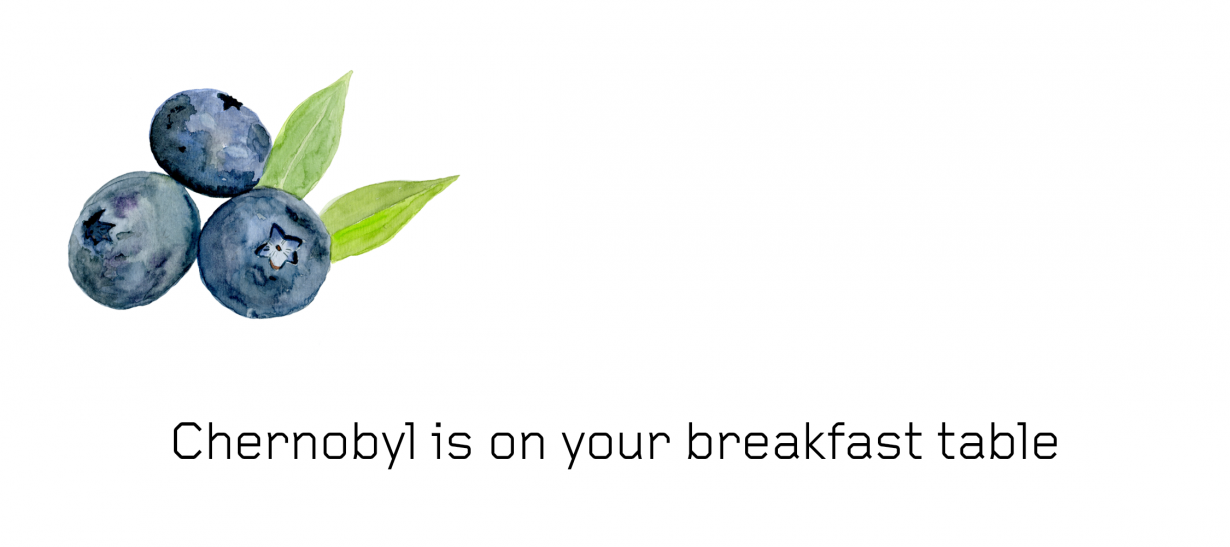




For the Power 100, Feral Atlas has assembled the Anthropocene Detonator Landscapes, as well as a selection of feral entities presented together with a ‘thought bomb’ from the associated field report. Inspired by ‘The Carrier Bag Theory of Fiction’ (1986), by Ursula K. Le Guin, Feral Atlas, as well as its upcoming book Field Guide to the Patchy Anthropocene: The New Nature (Stanford University Press, 2024), offers a carrier bag of Anthropocene stories. Le Guin’s theory differs from the linear, singular way of history-telling and instead focuses on women’s gathering activities that diversify storytelling. Embodying this feminist approach, the various visual elements shown in this year’s issue of the Power 100 showcase Feral Atlas’s intention in disrupting the homogeneity in disciplinary hierarchy and rejecting a single, common perspective, offering a collection of narratives, approaches and analyses intended to inspire more discoveries beyond the atlas.

Detonator Landscapes (in order of appearance): Capital by Feifei Zhou; Invasion by Feifei Zhou, Nancy McDinny and Andy Everson; Empire by Feifei Zhou; Acceleration by Feifei Zhou, Enzo Camacho and Amy Lien.
Feral Entities (in order of appearance; all artwork by Feifei Zhou and Maria Saeki): Marine plastic; Marabou storks (Leptoptilos crumenifer); Radioactive blueberries; Plastic bags; Cane toad (Rhinella marina, also known as Yätj Garkman in Yolngu Matha); Induced mud volcano.